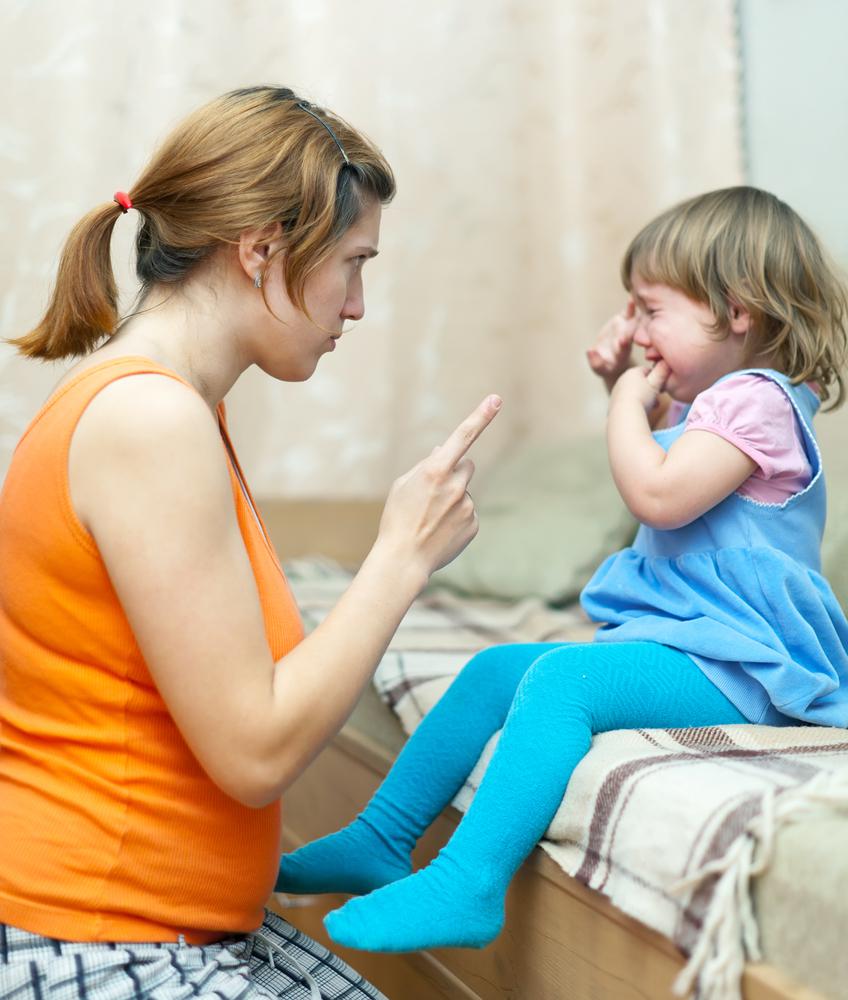
Emotional contagion can turn a child’s bad mood into a family-wide melt-down. Science can explain these dynamics and teach us how to stop destructive spirals and spread joy instead of anger.
During pandemics, personal choices determine whether we contain or spread the virus. Our decisions also govern something even more contagious – our emotions. When they’re out of control, one person’s irritability can poison the whole family’s happiness. But, if we understand and harness transmissible emotions, they can (like a vaccine) protect family wellbeing.
Emotional contagion starts before birth. Parental stress alters babies’ disposition and development in utero. Then infants’ bodies and minds are powerfully impacted by caregiver interactions. As we grow up, we become more independent, but we are all unavoidably influenced by the emotions of those close to us.
Intimate contagion involves sensing others’ needs and deriving pleasure from helping them. We intuit emotions through physiological synchrony, picking up one another’s moods as we do another’s gait when walking together.
Emotions are physiological responses designed to help us survive, thrive and reproduce. Feelings like fear, stress, joy and contentment are our conscious experiences of changing bodily states, just like hunger and thirst. Most of our responses happen in microseconds. We only become aware of them long after that (if we do at all).
When we sense a threat – whether internal like fear of failure, or external like an angry boss or parent – we enter fight/flight/freeze mode, exactly as we would when confronted with a charging bear. Our hormones, muscle tension, and blood flow change. Once the danger has passed, we may feel limp and almost dizzy with relief.
Unlike adults, children experience emotions only with their bodies, without conscious understanding. For example, a school-avoidance stomachache really hurts, and the child has no awareness of anxiety. Their bodies are simply producing the ‘flee’ impulse to escape danger, shutting down their digestive system. Adults in an equivalent situation might feel ‘butterflies in the stomach,’ but consciously interpret it as anxiety about going to work.
Similarly, a child’s stubborn or aggressive rebellion may signal fear or vulnerability putting the child’s body into ‘fight’ mode. Or sometimes a smiling face and compliance indicate a ‘freeze’ response triggered by insecurity. The child, unaware of their motivations, cannot explain this.
Since adults no longer speak children’s emotional language, they frequently misinterpret both good and bad behavior. Emotional contagion often causes this miscommunication to spiral into a cycle of negative interactions.
When children refuse to do school work or pick up their toys, parents may feel their authority is threatened, triggering the parent’s ‘fight’ response. Once angry, the parent may scold the child, increasing the child’s fear and impelling more extreme childish behavior. This only increases parental frustration, escalating the cycle until the parent screams at, physically restrains, or punishes the child, who becomes overwhelmed and ‘melts down’ or ‘tantrums.’
Emotional contagion often overwhelms caretakers, who may attempt to end the cycle by coercing the child into better behavior (e.g. the parent hitting a screaming child in the grocery store).
While all children need appropriate discipline, none need punishment. Discipline is derived from the word ‘disciple’ - someone who is a devoted follower. When we help children develop self-mastery they are grateful, while punishment breeds resentment.
Unfortunately, once the fight response kicks in, the impulse to attack comes along for the ride. If acted upon, a sense of despair often engulfs both parties. Repeated enough times, this pattern convinces the child that he or she is loathsome, a thorn in the parent’s side. That’s the bad news.
The good news is that when a child and parent have fun together, the positive feelings are equally contagious, beginning a virtuous cycle of escalating pleasure and joy. If this is repeated often enough, the child becomes convinced that he is a source of happiness and pleasure to the parent, and therefore an important and treasured being.
So how can parents increase the latter and reduce the former? Preventing negative emotional contagion is similar to prevention of Covid-19 transmission.
1. Wear a mask by calming yourself, modeling self-control, and keeping potentially dangerous emotions contained. To accomplish this, notice when childish provocation arouses your anger, and remember that the child is expressing distress, not defiance. Then create a barrier against transmission by mitigating your response.
2. Social distance: When negative emotional contagion begins to spiral, it is vital to step away before things are said or done that cause escalation.
Most children are unable to calm down until separated from others, but ‘time-outs’ can make matters worse. They fuel the child’s anger with feelings of being rejected or punished, making it much harder for them to reestablish self-control.
Instead, if possible, remove yourself. Say that you need be alone for a little while, and ask for the child’s assistance. This conveys that you are trying to make things better, not punish. Engaging the child’s impulse to help makes them feel valued and important.
If you can’t remove yourself, tell the child you love spending time with them, but only when they are self-controlled, so they need to go to another room and stay there until they are able to talk or play nicely. This communicates that the issue is self-mastery, not punishment.
Of course, it takes time for a child to learn what self-control feels like, so she will probably come back before she is calm. If so, tell her that she’s not yet under control, and to try again. Eventually, children will learn to feel the difference. Be sure to genuinely welcome the child’s company once she has regained self-control.
3. Contact tracing. Once you are separated, use the moment of peace to imagine what might cause you to react as the child did. Ask yourself whether he was frustrated, feeling neglected or treated unfairly, or if his needs for autonomy were not met. Then, try to remember in detail all of the things that happened earlier that day, and imagine which might have upset your child.
It could be something you barely noticed – an interaction with another person, a failure to achieve a goal, or being tired, hungry, or a little sick. A child stymied by schoolwork, painting a picture, or completing a puzzle may feel inadequate or angry with themselves. They experience this as a threat, so they say “NO!” to the next thing you ask of them. It may have absolutely nothing to do with you.
By tracing what happened in the prior hours, we can more easily respond to children’s difficult or provocative behavior with compassion rather than rage.
4. Inoculate yourself: Once ‘contact tracing’ identifies what typically triggers the child’s arousal, measures can be taken to reduce recurrences. Achieving greater understanding of each child’s behavioral language (no two are identical) inoculates us against mistaking signs of fear or frustration for a challenge to our authority.
Once we have learned to mask, cutting off the cycle of escalating negative emotions, we can focus on strategies to help the child, including distancing, and helping the child to identify triggering situations and emotions. This can turn previously miserable situations into opportunities to better understand our children, while helping them develop self-control, empathy, and emotional intelligence.
Emotional contagion is built into us. We all have the capacity to create lasting joy or misery in our own lives and those of others, especially the children in our care. If we enjoy spending time with them, including routines like taking a walk, cleaning, bedtime, and playtime, our pleasure in their company, by emotional contagion, will make them feel treasured and secure.
And if we welcome the contagion of our children’s delight, we can share their pleasure in the simplest things – a bug, a dust mote in the sun, a soap bubble. As we endure this pandemic winter, we can all benefit from sharing and jointly amplifying every bit of joy we can find.
REFERENCES:
Lisa Feldman Barrett’s research on emotion is outstanding – a good place to start is: “Your Brain Is Not for Thinking.”
Janet DiPietro’s research is essential reading on prenatal synchrony, including: “Predicting child temperament and behavior from the fetus” and “The gestational foundation of sex differences in development and vulnerability.”
Ruth Feldman’s brilliant research describes postnatal parent/child synchrony and its consequences in such publications as, “Synchronous Caregiving from Birth to Adulthood Tunes Humans' Social Brain,” and “Parent–infant synchrony and the construction of shared timing: Physiological precursors, developmental outcomes, and risk conditions.”
To understand how our physiology produces emotions and actions, read Robert Sapolsky’s excellent book, Behave, or watch his lecture on the JCCF Arts and Ideas YouTube channel.
To understand the synchrony mechanism in general, read Simone Shamay-Tsoory’s fascinating studies, including “Brain-to-brain coupling during handholding is associated with pain reduction” and “Herding Brains: A Core Neural Mechanism for Social Alignment”.
Michael Tomasello’s essential research on origins and importance of human cooperation, mutual problem solving and sharing, is briefly described “The Role of Ontogeny in the Evolution of Human Cooperation”.



























